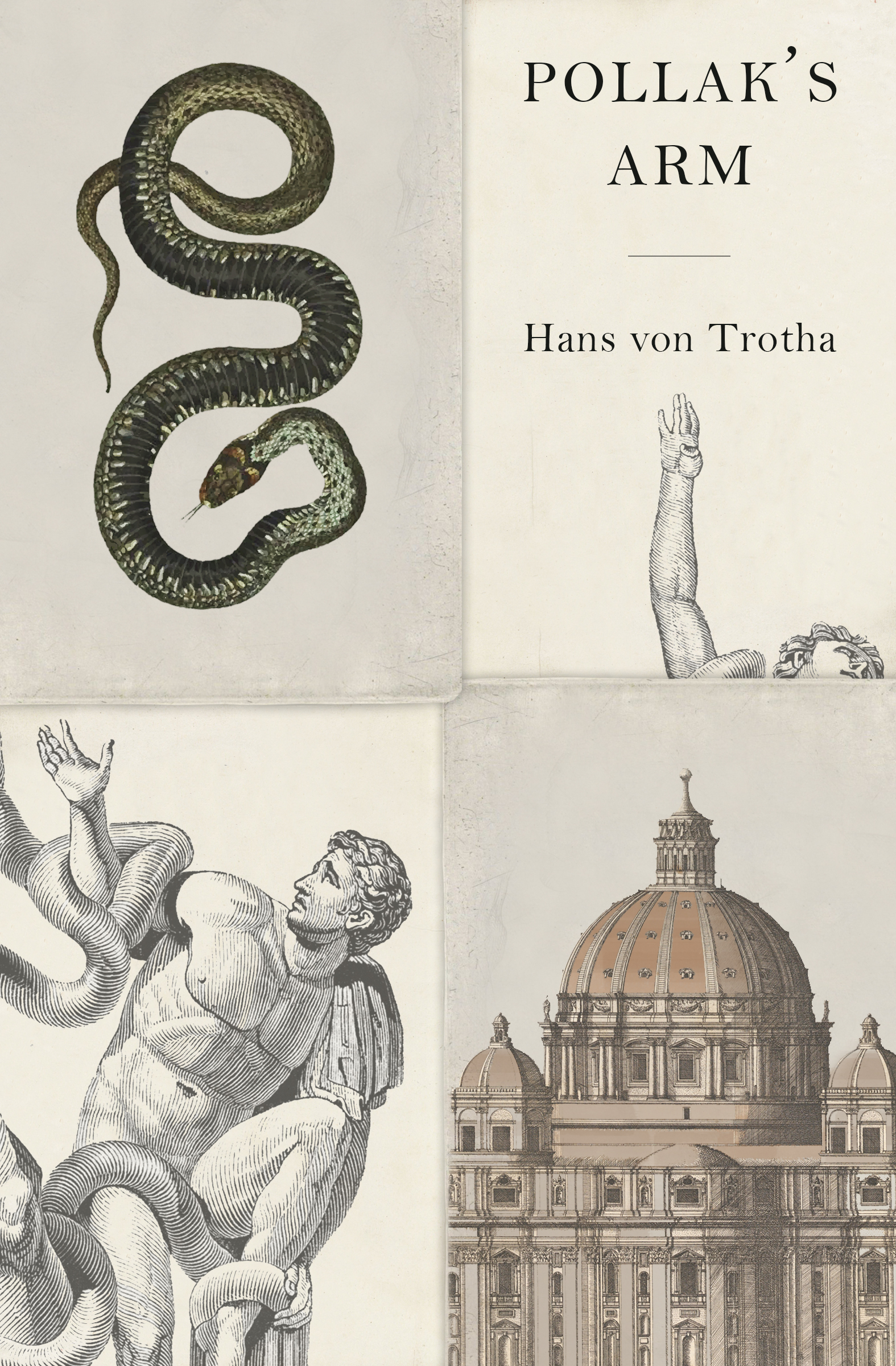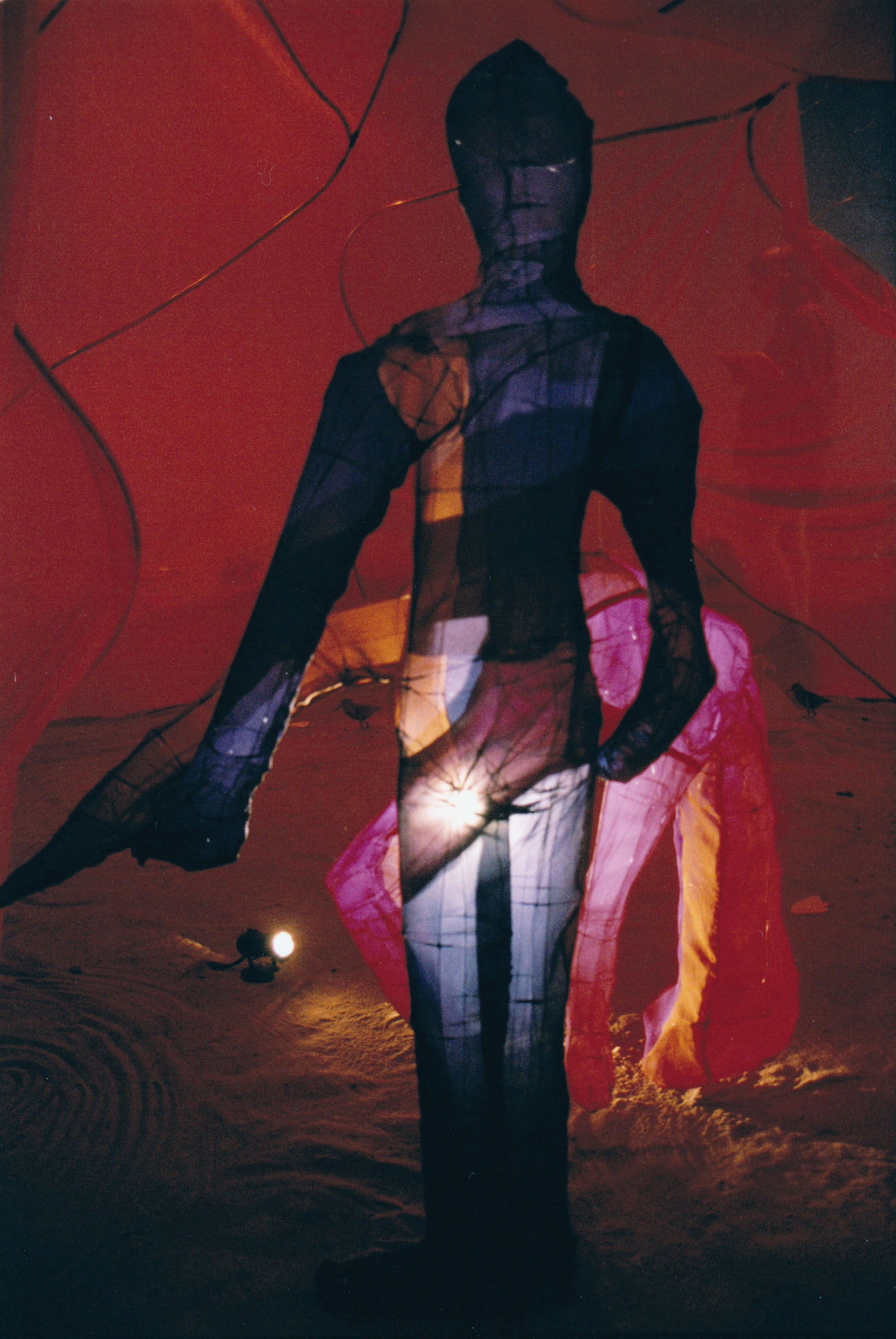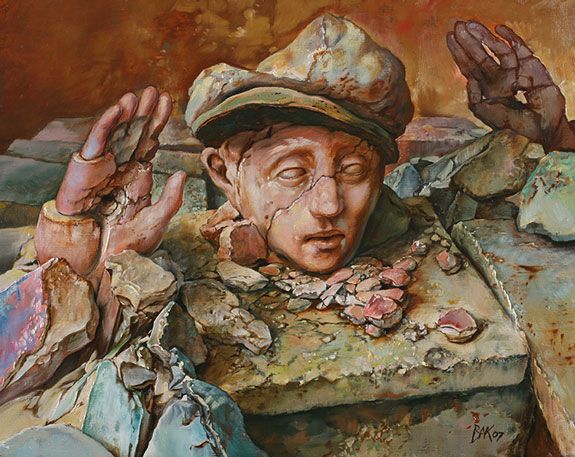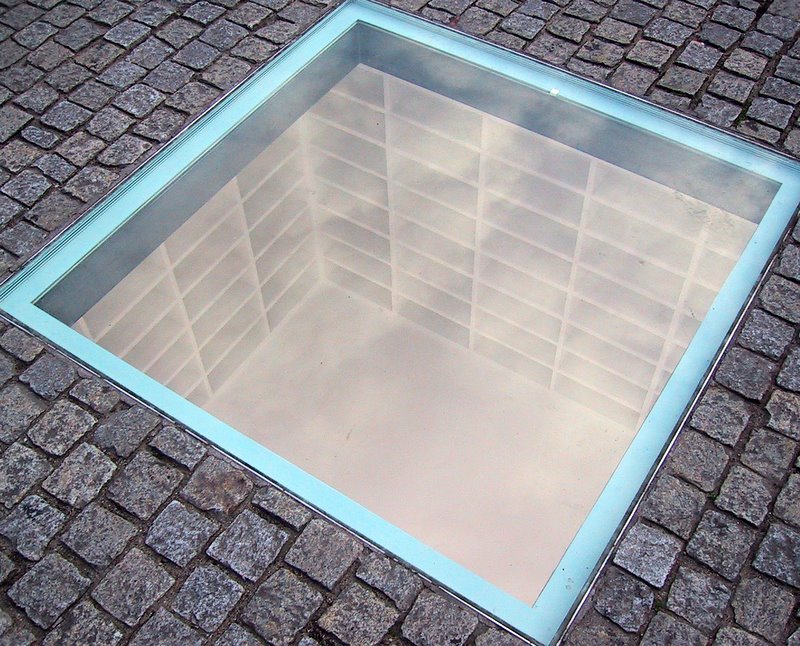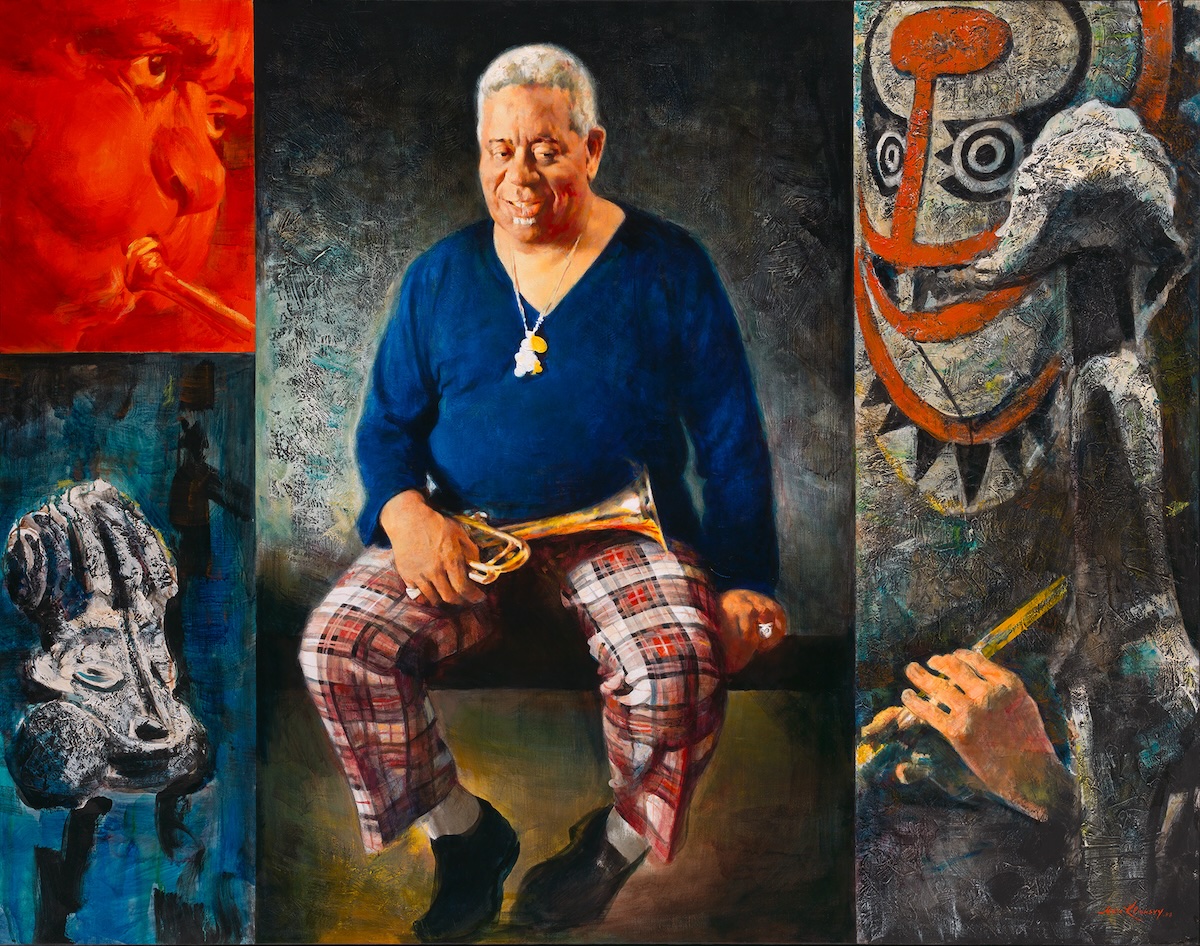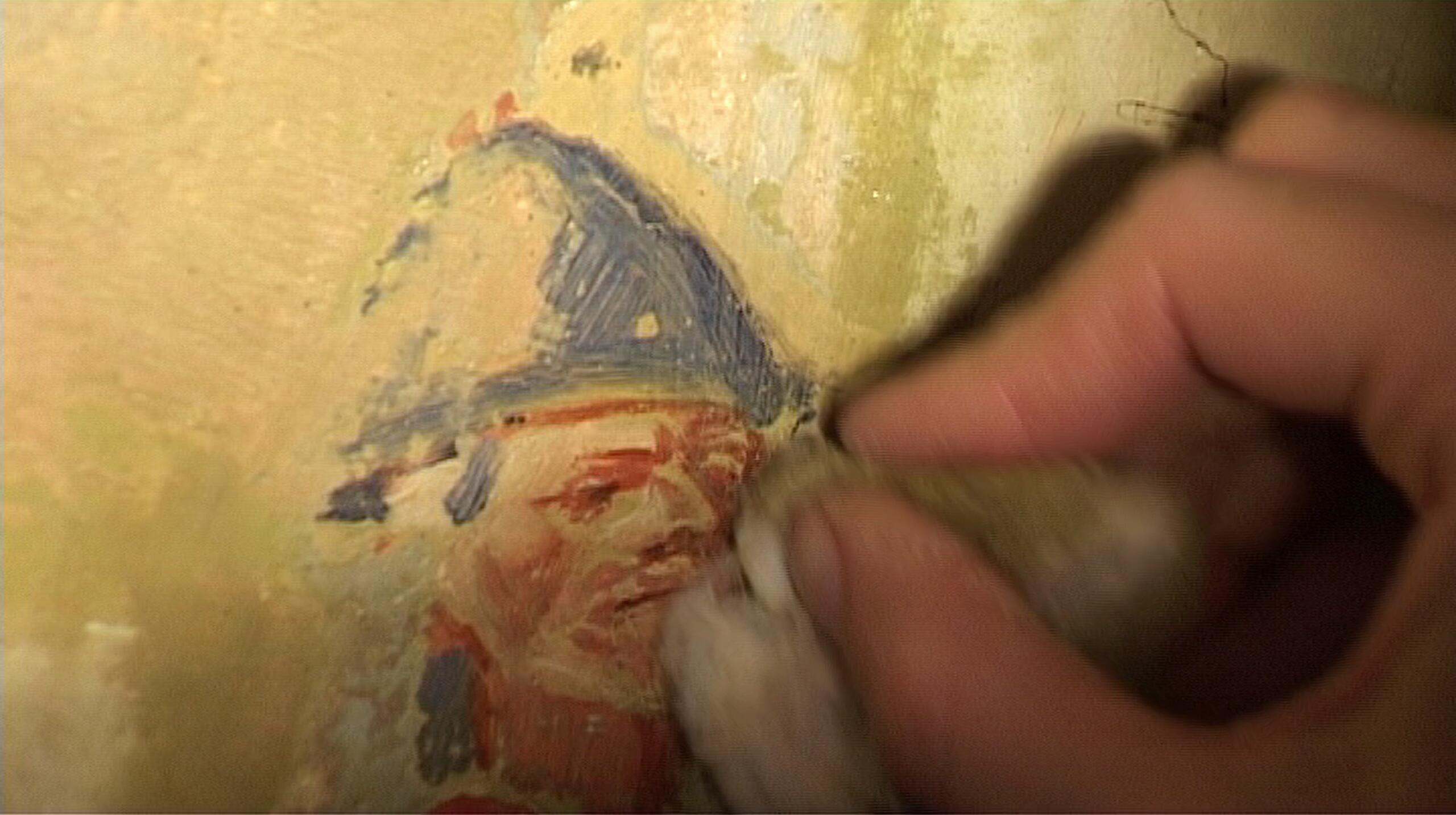Ori Z. Soltes
Ben-Zion (1897-1987):
Man of Many Faces
Featuring Tabita Shalem and Ori Z Soltes
1014 - space for ideas
1014 5th Avenue, New York, New York, NY, United States
Born in the Russian Empire, Ben-Zion (Benzion Weinman, 1897-1987) immigrated to New York City between the wars, arriving as a craftsman of words whose cultural Zionist convictions led him to write his poetry in Hebrew. By the early 1930s, the rise of fascism and its particularized manipulations of language drove him to despair of the power of words and to turn to visual art as a medium of expression. Endlessly creative, across the next six decades he produced a flood of drawings and oil paintings and sculptures often made by re-visioning found objects of wood, stone, and iron. As a founding member of the expressionist group, "The Ten"--that included among others a young Mark Rothko--Ben-Zion addressed social, political, and cultural [...]
Identity, Art and Migration:
Artist Refugees from Nazi Germany and Today
School of Visual Arts, New York
School of Visual Arts
133/141 West 21st Street Room 101C, New York, United States
Note: Attendees must provide proof of vaccination (including booster, if eligible) and advance Eventbrite registration. Presented by BFA Visual & Critical Studies, the SVA Honors Program, and The Fritz Ascher Society for Persecuted, Ostracized, and Banned Art. In honor of The Fritz Ascher Society for Persecuted, Ostracized and Banned Art's virtual exhibition “Identity, Art and Migration,” this panel discussion probes historical and all-too contemporary fault lines of persecution, migration, intolerance, cultural complexity and art. Historians, curators and artists come together to discuss the life and work of artists who were persecuted by the German Nazi regime and came to the US during the first half of the 20th century, while also hearing from living artists who are facing the challenge of relocation [...]
Death and Immortality:
The Gentle Power of Hans von Trotha’s “Pollak’s Arm”
Hans von Trotha and Ori Z Soltes in conversation
Marlene Meyerson JCC Manhattan
334 Amsterdam Ave, New York, NY, United States
Ludwig Pollak (Prague 1868-1943 Auschwitz) was an extraordinary connoisseur of antiquities--an Austro-Hungarian Jew whose path into academia was impeded by his religion, but who settled in Rome, where he carved out a unique place for himself as an expert in recognizing, understanding, and organizing great works of art. It was he who shaped and articulated the magnificent collections of JP Morgan. Of perhaps even greater consequence, his astute eye saw a sculpted fragment of an arm in a flea market that, he deduced, was the limb missing from the spectacular Hellenistic-Roman sculptural group known as Laocoon. He gifted that arm fragment to the Vatican so that it might complete the work that occupied an important place within [...]
From Generation to Generation:
The Upbringing and Art of
Mimi Gross (born 1940, New York)
Marlene Meyerson JCC Manhattan
334 Amsterdam Ave, New York, NY, United States
Mimi Gross is the daughter of well-known sculptor Chaim Gross (1902–1991). She grew up to become an artist and one obvious question one might ask is how her work was influenced by and/or diverged from her father's work. But both Chaim and his wife Renee were immigrants--so New York City-born Mimi grew up as an American in an immigrant household, which might raise the question: were there issues derived from the particulars of her growing up that affected her and her art--and might one imagine the curve of her life as different in a non-immigrant context, or a context experienced at a different time in American and world history? These and other questions are discussed in a dialogue between Mimi Gross and [...]
The Shape and Color of Survival.
Samuel Bak (born Vilnius, Lithuania, 1933)
Lecture by Ori Z Soltes, PhD
ONLINE
VA, United States
Image above: Samuel Bak, Warsaw Excavation, 2007. Oil on canvas, 16 x 20 in. Image Courtesy Pucker Gallery © Samuel Bak Samuel Bak was 6 years old when the Nazis began ending his childhood, as the war that they engendered would soon extend to his native Vilnius. The number “6” became an important element in his art, since it is also the number of the Commandment with which God enjoins us not to commit murder, for which the Holocaust represented such a profound abrogation. His father smuggled him out of the ghetto in the sack that he was still permitted to use to gather firewood—and was subsequently murdered by the regime. By then Bak himself had already [...]
EARLY ISRAELI AND AMERICAN ARTISTS:
RE-VISIONING THE HOLOCAUST.
Talk by Ori Z Soltes, Georgetown University, Washington DC
ONLINE
VA, United States
In honor of Yom HaShoah, this talk by Georgetown University professor Ori Z Soltes focuses on three Israeli and three American familiar and unfamiliar artists working in very diverse styles and not typically thought of as focusing on the Holocaust. Each of them, however, has offered powerful reflections on the defining catastrophe of the twentieth century. Barnett Newman, the foremost verbal spokesman for the chromatic side of the abstract expressionist movement redefining American painting in the early 1950s, offers an unexpectedly intense reflection on the question of theodicy. Mordecai Ardon, in the process of assuming leadership of the Bezalel school in Jerusalem at around the same time, balances between abstraction and figuration in depicting the Nazi-engendered chaos. Yigal Tumarkin’s [...]
Benno Elkan (1877-1960)
and the Definition of Israeli Art
Talk by Ori Z Soltes, PhD
ONLINE
VA, United States
In honor of Yom Ha'azmaut, Israel's Independence Day, and this year's 75th anniversary of the establishment of the modern state of Israel in 1948, this talk by Georgetown University professor Ori Z Soltes addresses the question of what defines Israeli art and when it began to take shape. Is it made only by Israelis---then how did Elkan's Menorah become the consummate symbol of Israel when he never lived in the state? Did "Israeli" art begin with or before the birth of the state? How does this relate to the opening of the Bezalel School of Art in 1906--and closing by 1929, only to re-open years later? How does it relate to the question of defining Jewish art? Benno Elkan's stunning work, [...]
Between America and France:
Varian Fry and the Rescue of Artists
Talk by Ori Z Soltes, PhD
ONLINE
VA, United States
With a belated reminder of the proximity of the American and French Independent Day celebrations, this talk focuses on the artists’ Schindler, the American journalist, Varian Fry (1907-1967). Using methods both legal and not, Fry managed to rescue some 2,000 individuals from France between 1940 and 1941. France had become largely swallowed up by Nazi Germany, the “free” parts in Southern France (Vichy France) were not necessarily unreluctant to assist with the deportation of Jews into Nazi-held territories, and the US immigration policies were far from open-handed to those seeking refuge. Who was he and who were some of those he helped—or in some cases, could not help—to escape destruction? Lecture by Ori Z. Soltes, introduced and moderated by [...]
The Art of Marc Klionsky:
Shaping a Three-World Condition from Minsk to New York
Lecture by Ori Z Soltes and conversation with daughter Nadia Klionsky
ONLINE
VA, United States
In this program Georgetown University professor and author, Ori Z Soltes, explores Marc Klionsky's life and work, in part through conversation with his daughter, the scholar and artist, Nadia Klionsky. Image above: Marc Klionsky, Dizzie Gillespie: The Man and his Trumpet, 1988. Oil on canvas, 52 x 66 inches. National Portrait Gallery, Washington, DC. This exciting program features the paintings of Marc Klionsky (1927–2017). Born in the Soviet Union, Klionsky managed to navigate what has been called a “two-world condition”—creating the particularized Soviet Socialist Realist work that was acceptable to the Stalinist and post-Stalinist State while allowing his soul to reveal itself in work that only a very few trusted viewers might see. As [...]
Bruno Schulz (1892-1942):
An Artist, a Murder, and the Hijacking of History
Benjamin Balint and Ori Z Soltes in Conversation
ONLINE
VA, United States
Benjamin Balint, author of the National Jewish Book Award winning book, and Georgetown University professor Ori Z Soltes in conversation. Bruno Schulz is renowned as a master of twentieth-century imaginative fiction. Isaac Bashevis Singer called him “one of the most remarkable writers who ever lived.” But Schulz was also an exceptionally talented graphic artist whose masochistic drawings would catch the eye of a sadistic Nazi officer. Schulz’s art became the currency in which he bought life. Image above: Bruno Schulz, Mural, 1941-1942. Drohobycz. Discovery Benjamin Geissler, 2001. Drawing on extensive new reporting and archival research, Benjamin Balint chases the inventive murals Schulz painted on the walls of an SS villa—the last traces of his vanished [...]




